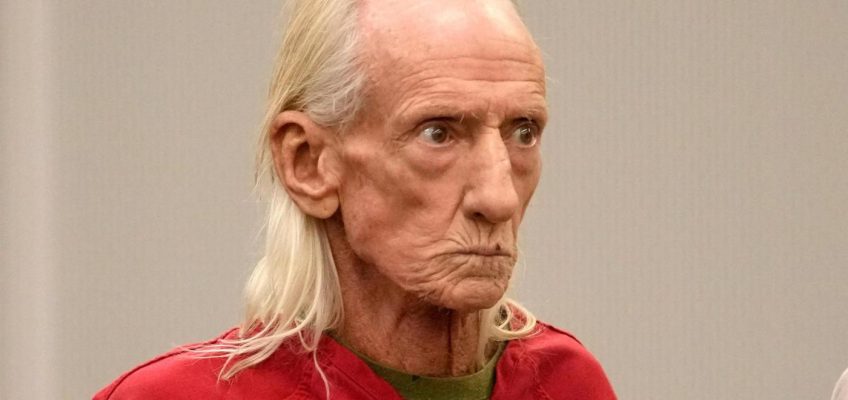Republicans want to stamp the State of Texas’ seal on Bitcoin by creating a “strategic reserve” that could use taxpayer dollars to purchase cryptocurrency.
This latest of pet issues advanced by the crypto crew has somehow won priority status on Lieutenant Governor Dan Patrick’s biennial honey-do list. Governor Greg Abbott even suggested interest, posting an emoji on X expressing ocular intrigue as the Senate bill was filed in early February.
The push is led by GOP Senator Charles Schwertner, the author of Senate Bill 21, dubbed the “Texas Strategic Bitcoin Reserve and Investment Act”, which would prop up the state crypto reserve. As chair of the Senate Committee on Business and Commerce, which has broad purview over the financial industry, Schwertner made his bill the first to get a full hearing this session before his powerful panel. The committee, made up of seven Republicans and four Democrats, unanimously passed an amended version of the bill on Thursday, setting it up for a vote on the Senate floor.
The bill would direct the Texas comptroller to establish a reserve fund, outside of the general treasury, through which the agency would have broad discretion to buy, sell, or otherwise invest in Bitcoin. As approved by the committee, the reserve would be limited to cryptocurrencies that have had an average market cap of $500 billion over 12 months—a threshold that only Bitcoin currently meets. The fund would be overseen by an advisory board of crypto investment experts appointed by the comptroller.
While no proposed funding has currently been set aside for the reserve, Schwertner said that he intended to ask legislative budget writers to provide some level of appropriation—potentially around $20 million for the next biennium.
A Texas bitcoin reserve would not only serve as a symbol of the Lone Star State’s support of the crypto industry, Schwertner said, but would also send a message rebuking the federal government’s ballooning debt. He posited that the U.S. dollar is bound to crater at some point in the future, and a Bitcoin reserve would serve as a financial hedge for Texas when that happens.
“All fiat currency eventually goes to its natural worth, which is the paper it’s printed on,” Schwertner said at the February 18 hearing. “We can buy land. We can buy gold. I think Texas should have the option of evaluating the best performing asset [Bitcoin] of the last 10 years.”
Hilary Allen, a law professor at American University who specializes in financial regulation, said state crypto reserves are unwise .“There is simply nothing behind Bitcoin. It has no strategic use,” Allen told the Texas Observer. Cryptocurrencies like Bitcoin are, Allen says, effectively a “ponzi–like asset” with no tangible value, entirely dependent on a supply-and demand-market of speculation and manipulation.
“I think the only people this will benefit are the Bitcoin ‘whales,’ the people who are already heavily invested in Bitcoin,” she said, by providing a state-subsidized market for big investors who want to cash out.
If the state simply bought and held Bitcoin for years, it would merely prop up the market, while trying to strategically sell off its crypto holdings could cause the price to plummet.
Schwertner and his crypto cronies downplay those concerns and say that bitcoin has become a mainstream investment akin to traditional stocks and financial securities
Schwertner drafted the bill—an overhauled version of an earlier bill he filed—in consultation with the Texas Blockchain Council, a trade group that represents the crypto industry. Members of the group packed the hearing room, and the council’s president Lee Bratcher testified as the lead invited witness in support of the bill.
Comptroller Glenn Hegar also provided testimony that, while officially neutral, was generally in favor of the reserve. He also acknowledged that his office currently has the authority to invest in crypto funds but has opted not to do so.
One of the most controversial parts of Schwertner’s bill was a provision that would have allowed private citizens and corporations to donate Bitcoin or other cryptocurrency to the reserve. That raised concerns that private investors or companies could expose the strategic reserve to self-serving manipulation or promotion—and even provide a means for covert influence-peddling by foreign actors or other shadowy interests.
“If someone decides to give $10 billion [worth of crypto] to the state, they’re creating a market for themselves [and could effectively] manipulate the market using the imprimatur of the state,” said Senator Nathan Johnson, a Dallas Democrat, as he raised numerous concerns about the bill during the hearing. “I don’t want the state to be a tool of an investor. I would want this to be limited to just state allocations. I don’t want billionaire tech bros owning a branch of the state government.”
In a surprising move, Schwertner stripped the private donation measure out of his bill, which was then approved unanimously at a committee hearing on Thursday. Supporters of the Bitcoin reserve had said the donation component would ensure that there was limited risk to taxpayer funds. “The beauty of a Texas strategic Bitcoin reserve is it’s primarily driven by donations, and there’s really no risk to the Texas taxpayer. It’s only a net positive,” Bratcher previously told the Austin American-Statesman.
Bratcher told the Observer that the group nevertheless supports the modified Bitcoin bill.
“While we will miss the opportunity to encourage donations to the Texas Strategic Bitcoin Reserve, the Texas Blockchain Council fully supports the Senate Business and Commerce Committee’s unanimous and bi-partisan decision to remove the donation aspect of the bill,” Bratcher said in a statement. “With this change, the Senate is wisely streamlining the future administrative processes required for administering the Texas Strategic Bitcoin Reserve.”
GOP Representative Giovanni Capriglione (who chairs the newly minted House “DOGE” committee) has his own version of a Bitcoin reserve bill that, as filed, would allow for private donations from Texas residents only.
Texas’ pursuit of a Bitcoin reserve is part of a national trend. After Trump’s election in November, several states rushed to consider creating their own crypto reserves while the president signaled his intent to create a federal bitcoin stockpile. Yet lawmakers in several states including Montana, Pennsylvania, Wyoming, and the Dakotas have seemingly sobered up quickly and rejected such legislation. The idea of a state Bitcoin reserve is a new tact from the crypto industry—and an ironic twist in the evolution of cryptocurrency, which started from the idea of creating a digital currency free from any government control or influence.
In past years, advocates had also pushed state and local governments to accept Bitcoin and other “digital currency” as legal tender with which to pay taxes and other state fees. But crypto enthusiasts have largely abandoned that for a more ambitious agenda, viewing Bitcoin now as more of a legitimate financial security that should receive special, favorable regulations—and investment—from the government.
Texas’ top Republicans, including Abbott and Patrick, have been playing an increasingly flirtatious game of footsie with Big Bitcoin—including by creating special incentives for the many massive crypto data mines that have sprung up around the state.
Last session, Republican Senator Bryan Hughes filed a bill that would have created a digital currency backed by state-owned gold. GOP Representative Cody Harris has filed a similar bill this session, saying at a blockchain conference in November that the idea is to create a government-sanctioned on-ramp for crypto-skeptical investors. “It’s something safe that people can get their feet wet with. It’s more of a stepping stone to owning Bitcoin than competing with it or taking the place or something like that.”
The creation of a strategic reserve for an intangible, speculative coin wouldn’t be the first time that Texas has sought to protect itself from the tyranny of fiat currency. Back in 2015, Texas lawmakers passed a bill (authored by Capriglione) creating a state bullion depository to safekeep Texans’ precious metals. Upon passage, Texas universities’ investment funds were also supposed to repatriate their gold holdings from New York to the new Fort Knox of Texas, but they apparently liquidated their treasure instead. Nor did Texas become a major investor in gold commodities, as was expected. Hegar said in the Bitcoin hearing that the state does not own any gold. Hegar was, however, the first person to put his own personal gold in the bullion depository.
The post From Bullion to Bitcoin: Crypto Reserve Is Latest Fiscal Folly in Texas appeared first on The Texas Observer.



